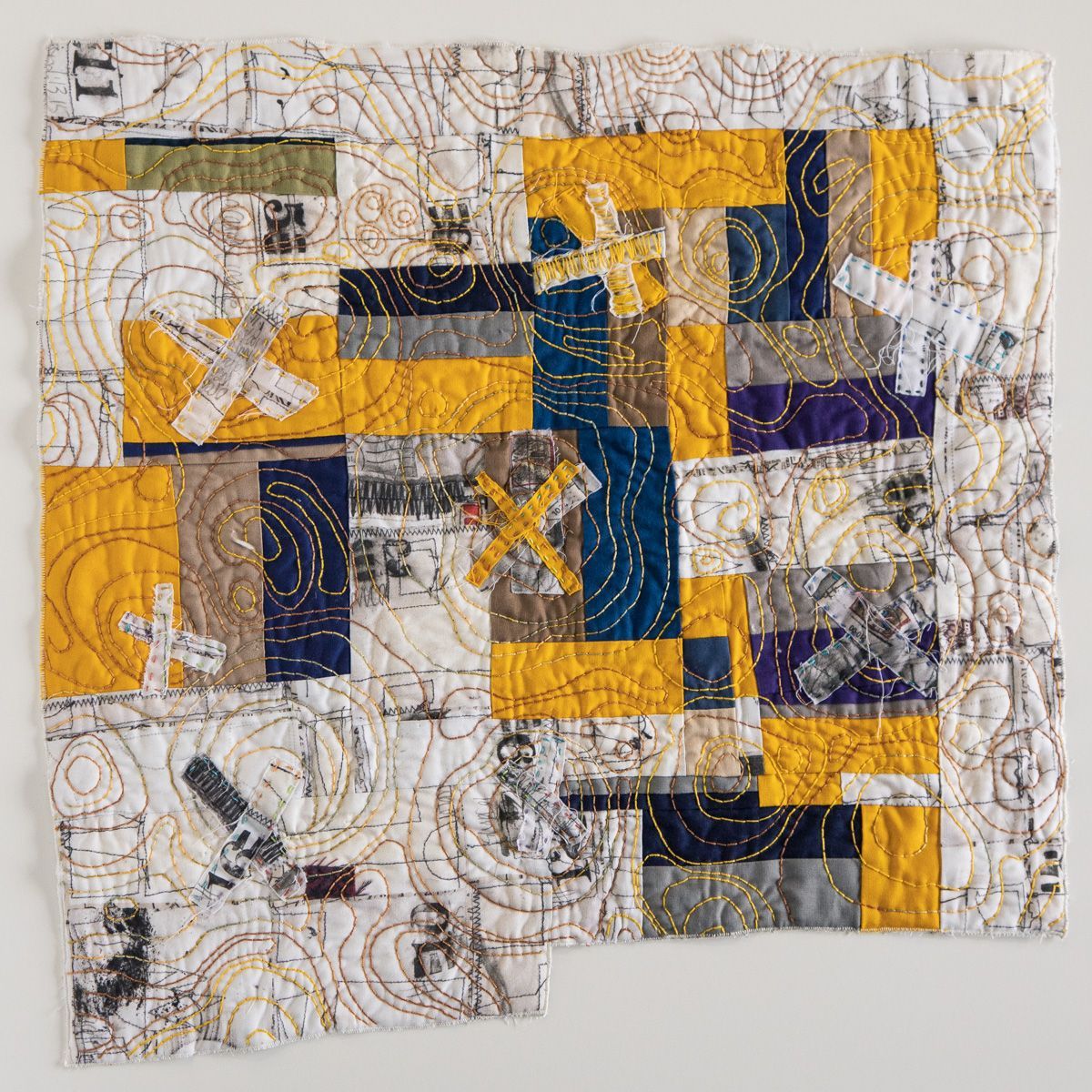Generalized Anxiety: When Worry Gets Out of Control

20x19in, quilter’s cotton (machine-pieced) & hand-quilted (pearle cotton/floss), created in 2022, NFS
This quilt is meant to represent generalized anxiety disorder (GAD). Occasional anxiety is a normal part of life. Many people may worry about things such as health, money, or family problems. But people with GAD feel extremely worried or nervous more frequently about these and other things—even when there is little or no reason to worry about them. GAD usually involves a persistent feeling of anxiety or dread that interferes with how you live your life. People living with GAD experience frequent anxiety for months, if not years. GAD develops slowly. It often starts around age 30, although it can occur in childhood. The disorder is more common in women than in men. (NIMH, see below)
What to look for: You may notice the irregular shape of this quilt, along with the dense hand-quilting. I wanted to demonstrate the 'topography' of generalized anxiety as these symptoms appear typical/normal (much like being on a map) but the worry has gotten out of hand (unable to focus on one spot or get to one place without fear or panic). There are constant questions of what's wrong with me, what am I doing wrong, why can't I just get over this?!
Book recommendation(s): These books are not meant to replace medical intervention and/or skilled therapy.
Rewire Your Anxious Brain: How to Use the Neuroscience of Fear to End Anxiety, Panic, and Worry.
https://a.co/d/9q9G0aH
Chatter: The Voice in Our Head, Why it Matters, and How to Harness It.
https://a.co/d/dWxfUZX
Learn More: From NIMH (National Institute for Mental Health):
People with GAD may:
- Worry excessively about everyday things
- Have trouble controlling their worries or feelings of nervousness
- Know that they worry much more than they should
- Feel restless and have trouble relaxing
- Have a hard time concentrating
- Startle easily
- Have trouble falling asleep or staying asleep
- Tire easily or feel tired all the time
- Have headaches, muscle aches, stomachaches, or unexplained pains
- Have a hard time swallowing
- Tremble or twitch
- Feel irritable or "on edge"
- Sweat a lot, feel lightheaded, or feel out of breath
- Have to go to the bathroom frequently
If you think you’re experiencing symptoms of GAD, talk to a health care provider. After discussing your history, a health care provider may conduct a physical exam to ensure that an unrelated physical problem is not causing your symptoms. A health care provider may refer you to a mental health professional, such as a psychiatrist, psychologist, or clinical social worker. The first step to effective treatment is to get a diagnosis, usually from a mental health professional. GAD is generally treated with psychotherapy (sometimes called “talk therapy”), medication, or both. Speak with a health care provider about the best treatment for you.
Resources:
CLICK HERE for a Ted Talk by Olivia Remes (Psychologist) on How to Cope With Anxiety
CLICK HERE for a video on what causes panic attacks and how to prevent them.
Learn more about this diagnosis at the National Institute for Mental Health.

All Rights Reserved | Creator's Wellbeing